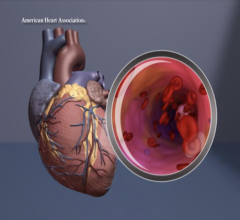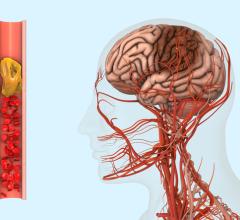
Cedars-Sinai investigators have found that a new method of analyzing the electrocardiogram test could improve how clinicians predict sudden cardiac arrest. Getty Images
November 17, 2023 — Sudden cardiac arrest remains a deadly and complex condition, but investigators in the Smidt Heart Institute at Cedars-Sinai have discovered a new method—using a widely available cardiovascular test—for predicting the heart malfunction.
“This is proof of a novel concept that while our current prediction methods measure a snapshot in time, increased risk of sudden cardiac arrest can have a measurable, dynamic component,” said Sumeet Chugh, MD, director of the Center for Cardiac Arrest Prevention in the Department of Cardiology in the Smidt Heart Institute at Cedars-Sinai and senior author of the study.
The study published today in the European Heart Journal and was presented simultaneously during the American Heart Association Scientific Sessions 2023.
Sudden cardiac arrest occurs when an electrical circuit in the heart malfunctions and abruptly causes the heart to stop beating. The condition is lethal in 90% of cases. Patients found to be at high risk for sudden cardiac arrest can be preemptively treated with medications or have a defibrillator implanted surgically that can shock a stopped heart into beating.
Medical knowledge is a moving target, however, and over the last two decades it has become more challenging to pinpoint the best candidates for the surgically implanted defibrillator.
“Based on these findings, we now know that electrocardiogram abnormalities are escalated over time in people who have sudden cardiac arrest compared to people who are not destined to experience the condition,” said Chugh, who is also medical director of the Heart Rhythm Center. “We can potentially leverage this dynamic change to improve how we identify candidates who will benefit the most from an implantable defibrillator.”
Investigators looked at the trajectory of electrocardiogram changes in patients who ended up having a cardiac arrest compared to patients who never did.
The team pulled the study population from two ongoing, community-based studies led by Chugh: the Prediction of Sudden Death in Multi-Ethnic Communities (PRESTO) Study in Ventura County, California, and the Oregon Sudden Unexpected Death Study (SUDS), based in Portland, Oregon. This study marks the 100th publication from the Oregon Sudden Unexpected Death Study, which was founded on Feb. 1, 2002.
The investigators analyzed data in people who had at least two electrocardiograms. They defined variability based on six previously validated markers of electrical risk, which were initially published in the European Heart Journal in 2017.
These markers include the patient's heart rate, left ventricular hypertrophy (thickening of the walls of the heart) and four measures of how the heart muscle undergoes electrical stimulation and relaxation.
In their latest research, investigators carried out this work in two stages.
In the first, investigators compared electrocardiograms from people in the Oregon study who had sudden cardiac arrest with electrocardiograms from people in Oregon who did not. In the second study, they attempted to test these findings in corresponding groups of people in California. In both regions, people who suffered from sudden cardiac arrest had a substantial increase in their electrical risk measured by the electrocardiogram, but this was not observed in the comparison groups.
Evaluating further, the investigators found that the increased electrical risk was observed uniformly in the five years leading up to the sudden cardiac arrest. Participants who had sudden cardiac arrest and those who did not were matched by sex, age and duration between their two electrocardiograms. When all clinical conditions, the static electrocardiogram, and the dynamic change in electrical risk were analyzed together, the dynamic change further improved prediction of risk.
“This highly novel study demonstrates that combining dynamic risk with static risk will enable better identification of individuals at high risk for sudden cardiac death,” said Christine M. Albert, MD, MPH, chair of the Department of Cardiology in the Smidt Heart Institute, who was not involved in this study. “Our nationally recognized Center for Cardiac Arrest Prevention has studied sudden cardiac arrest for over two decades. This important research brings us closer to being able to predict the event.”
This concept will need to be tested further before taking it to the clinic. The investigators are currently designing a study that will track how well these dynamic changes predict sudden cardiac arrest in patients who are followed over time.
Other Cedars-Sinai investigators who worked on the study include Hoang Nhat Pham, MD; Lauri Holmstrom, MD, PhD; Harpriya Chugh; Audrey Uy-Evanado, MD; Kotoka Nakamura, PhD; Zijun Frank Zhang, PhD; Angelo Salvucci, MD; Jonathan Jui, MD; and Kyndaron Reinier, PhD.
For more information: https://www.cedars-sinai.org


 July 24, 2024
July 24, 2024 








